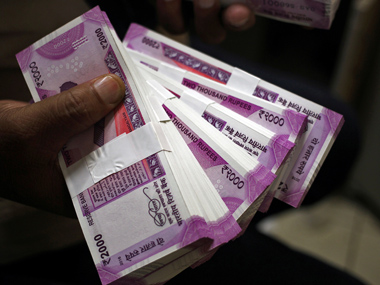The Reserve Bank of India (RBI) has been pushing banks towards lower interest rates for a while now. Since the beginning of this year, the RBI has cut the repo rate from 6.5 percent to 5.15 percent, by 135 basis points. The repo rate is the interest rate at which the RBI lends to banks. One basis point is one-hundredth of a percentage. Despite, this huge cut in the repo, the lending rates of banks haven’t gone down. In December 2018, the weighted average lending rate of banks had stood at 10.35 percent. By August 2019, the latest data available, this had gone up to 10.45 percent, despite the huge cut in the repo rate. With the government borrowing increasing and the financial savings coming down over the years, banks have found it tough to cut the interest rate on their deposits. In this scenario, one can’t expect them to cut interest rates on their loans. [caption id=“attachment_6013191” align=“alignleft” width=“380”] Representational image. Reuters.[/caption] Other than cutting the repo rate, RBI has also cut the statutory liquidity ratio from the beginning of this year. But this doesn’t seem to have helped in bringing down the rate at which banks give out loans, either. Banks raise deposits to give out loans. A certain portion of these deposits needs to compulsorily be invested in government securities (G-secs) and other approved financial securities. This proportion is referred to as the statutory liquidity ratio (SLR). Since the beginning of this year, the RBI has cut the SLR by 100 basis points from 19.5 percent to 18.5 percent. One basis point is one-hundredth of a percentage. At the beginning of the year, banks had to invest Rs 19.5 of every Rs 100 they had raised as a deposit in SLR approved securities. This has now come down to Rs 18.5. This is the minimum limit. The idea behind cutting the SLR is that banks will need to invest a lower proportion of their deposits in G-secs and in the process they will have more money to lend. With banks having more money to lend, they will cut down their deposit and lending rates. This will push the overall interest rates downwards. At lower interest rates, people will borrow and spend more and in the process, businesses will benefit, and the economic recovery will happen. At least, that is how it was supposed to work out in theory. Nevertheless, as happens often in economics, things haven’t turned out as they were expected to be. The banks haven’t acted in a way that the RBI expected them to. Take a look at the accompanying chart. At the beginning of the year, banks had invested 28.1 percent of their deposits in SLR approved securities. As the SLR was cut, the ratio fell to 26.9 percent at the end of March 2019 and has largely had an upward trend since then. As of 11 October, it stood a 28.6 percent, which is more than it was at the beginning of the year.
So, instead of moving their money away from G-secs, the banks have increased their exposure to them. Why is that the case? A straightforward explanation for this lies in the fact that banks are also feeling the heat of the economic slowdown and aren’t finding enough good opportunities to lend out money, and they are generally playing it safe, like they should. In fact, the year-on-year non-food credit growth of banks was at 8.72 percent as of 11 October. It was at 8.65 percent as of 27 September. This is the first time that the non-food credit growth has been in single digits since December 2017. This basically shows that banks are generally trying to play it safe. This makes sense given that the banks, in particular public sector banks, have been dealing with a huge amount of bad loans which have accumulated over the years. Hence, they are being risk-averse at this point of time. Lending to the government is assumed to be the safest form for banks. Over the past few months, the banks have invested a greater proportion of their deposits in G-secs. This can also be referred to as lazy banking. But, as mentioned earlier, it is worth remembering that Indian banks, especially the public sector banks (PSBs), are still trying to come out of the bad loans mess that they have landed themselves in. In this scenario, it makes more sense for them to play it safe and that is what they are doing. (The writer is the author of the Easy Money trilogy. He tweets @kaul_vivek)


)

)
)
)
)
)
)
)
)



